The rise in popularity of green building means that some notable trends are emerging – and for good reason. Homeowners, builders and designers who choose sustainable building experience some amazing benefits that no other type of building could ever compare with. The U.S. Green Building Council, a major supporter of sustainable home design, advocates that sustainable homes are energy-efficient, good for the environment, healthy and clean, and often totally stunning – and the top sustainable design trends definitely reflect it! From tiny homes to giant statement windows; from recycled materials to living walls, the green building movement reflected in our top 10 sustainable home design trends is nothing short of extraordinary.
Sustainable Home Design Trends
Prefabs
A prefab, or prefabricated home, is built off-site and then shipped to a building site in parts to be assembled on the home lot. The term “prefab home” is simply a generic term used to describe any type of home built in a factory. Prefab homes are affordable and come with plenty of benefits, so it’s no surprise that prefab popularity is on the rise.
Some benefits of prefab homes:
- Less waste – Prebuilt home builders are efficient in their production and can more accurately gauge how much material is required, resulting in less waste. Materials are also less likely to get stolen, vandalized, or damaged, since they’re stored in a factory instead of on-site.
- Durability – The extra materials needed to reinforce the house frame for shipment make the home more durable. Prebuilt homes are also precision engineered, which contributes to their greater durability.
- Short construction time – Prefabs can be made in the factory at the same time as deconstruction and site preparation, and since building takes place indoors, weather delays are not an issue.
- Best for remote locations – Built in one central location then delivered, prefabs alleviate the difficulty in finding contractors willing to travel a long distance to build a home. Plus, a single delivery of the pre-built home means less material transportation costs than a traditional build.
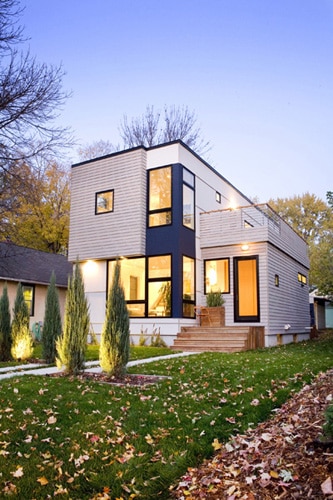
featured
manufacturers:
Cargotecture
Another sustainable design trend that’s on the rise: Building homes using recycled shipping containers, or “Cargotecture” — a term coined in 2003 to describe a building built partially or entirely from recycled shipping containers. The containers provide some excellent benefits; among these benefits are incredible structural strength and durability, utilizing valuable materials that would otherwise be trashed, and saving time and money. Cate Leger, principal of Leger Wanaselja Architects, a firm highly focused on materials reuse, says that shipping containers are an example of the huge amount of “high-quality waste in our society.” Homes built from containers are durable, secure, overtly sustainable, and in some cases relocatable structures.
Shipping containers made of aluminum or steel are inexpensive, and stronger than average, building blocks — like giant, super-strength Legos. Due to their durability and resistance to natural forces, containers are naturally suited for post-disaster housing and community centers. But the design versatility and sustainable nature of containers have captured the imagination of architects, designers, and homeowners worldwide. From rustic off-the-grid cabins to striking high-rises and apartment buildings, there are enough cool container structures around to constitute a whole movement.

Image courtesy of InHabitat.com
Tiny Homes
Tiny homes, or homes with an average size of 186 square feet, come with a massive amount of benefits — including their extremely earth-friendly, low-cost, and efficient nature. For example, the average home’s energy use results in the release of over 16,000lbs of CO2 pollution annually, while a tiny home (average size: 186 square feet) releases only 1,114lbs of CO2.
Tiny house benefits:
1. Mobility. One of the biggest benefits of having a tiny home is that you can just hitch it to a truck and drive it to a new location. Whether you’re moving to a new piece of land or just vacationing, tiny home living means you can easily take your home with you.
2. Affordability. Building a tiny home costs a fraction of the price of building a traditional home – And you can have everything custom-designed for you! Prices for tiny homes can range from below $19,000 to around $50,000, and the possibilities are endless.
A tiny home built with 80% recycled materials
3. Low-to-no monthly costs. No matter your style of tiny home and how “off-the-grid” your home is set up to be (i.e. solar panels, rainwater collection, etc), your monthly bills will be a fraction of what you’re used to paying in a traditional home. Heating, cooling, and powering a <200 sq. ft. home requires almost no energy.
4. Energy efficiency. Even if you opt against solar power (the most efficient option) and hook up your house to a power line, the energy needs of such a small space are minuscule compared to the needs of the average home. In addition, tiny homes usually mean smaller and more efficient appliances.
5. Less time (and money) spent on cleaning. Such a small space requires almost no cleaning and maintenance to keep it in tip-top shape. With the time and supplies you need to clean your kitchen now, you could clean your entire tiny home!
Green Certified Homes
The rising interest in green building has been accompanied by a growing interest in green certification. As a result, many organizations have designed highly esteemed green building standards and certifications. Some of the most extensive and widely-known green building certifications include:
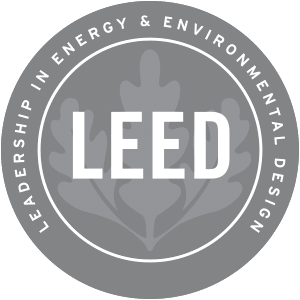
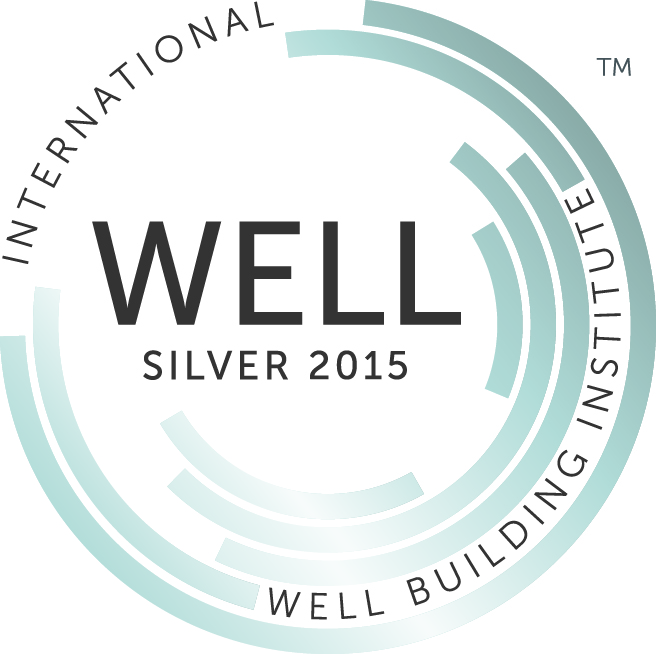
LEED
LEED, or Leadership in Energy and Environmental Design, is changing the way we think about how buildings and communities are planned, constructed, maintained, and operated. Leaders around the world have made LEED the most widely used third-party verification for green buildings, with around 1.85 million square feet being certified daily.
LEED works for all buildings—from homes to corporate headquarters—at all phases of development. Projects pursuing LEED certification earn points across several areas that address sustainability issues. Based on the number of points achieved, a project then receives one of four LEED rating levels: Certified, Silver, Gold and Platinum. LEED-certified buildings are resource efficient. They use less water and energy and reduce greenhouse gas emissions. As an added bonus, they save money. Visit the U.S. Green Building Council to learn more about why LEED continues to be the leading benchmark in green building.
WELL
The WELL Building Standard® is an evidence-based system for measuring, certifying, and monitoring the performance of building features that impact health and well-being. WELL is administered by the International WELL Building Institute™ (IWBI), a public benefit corporation whose mission is to improve human health and well-being through the built environment. WELL is third-party certified by Green Business Certification Inc. (GBCI).
Living Building Challenge
The Living Building Challenge™ is a building certification program, advocacy tool, and philosophy that defines the most advanced measure of sustainability in the built environment possible today and acts to rapidly diminish the gap between current limits and the end-game positive solutions we seek.
The Challenge is comprised of seven performance categories called Petals: Place, Water, Energy, Health & Happiness, Materials, Equity and Beauty. Petals are subdivided into a total of twenty Imperatives, each of which focuses on a specific sphere of influence. This compilation of Imperatives can be applied to almost every conceivable building project, of any scale and any location—be it a new building or an existing structure.
For more information,
- Learn what is new in Living Building Challenge 4.0
- Sign up for an upcoming Understanding the Living Building Challenge in-person workshops or online webinars.
Passivhaus
Passivhaus or ‘Passive House’ is the fastest growing energy performance standard in the world with 30,000 buildings realised to date – and the majority of them have been built since the turn of the century. The Passivhaus standard’s strengths lie in the simplicity of its approach; build a house that has an excellent thermal performance, exceptional airtightness with mechanical ventilation.
This robust approach to building design allows the designer to minimize the ‘Heating Demand’ of the building and in some residential buildings, only specify a heated towel rail as means of conventional heating. This heat can then be recovered and circulated by a Mechanical Ventilation and Heat Recovery (MVHR) unit.
Smart Homes
The American Institute of Architects estimates that the future of eco-friendly building will bring even more green technological integration, including “dedicated support for personal devices, along with automated controls for temperature, security, and lighting.” In fact, a variety of smart home technology products are already on the rise — and NuBryte is an excellent example.
NuBryte Smart Home Technology
ADD CONVENIENCE & COMFORT TO YOUR HOME
NuBryte is a complete smart home solution, in one single platform – No need to purchase and install dozens of different, single-function gadgets that may or may not all work together. With NuBryte, you get instant access to must-have smart home features like:
- Home Security with built-in camera and motion detector
- Smart Lighting with 5 advanced lighting modes
- Wi-Fi Intercom System
- Integrated Family Calendar
- Energy Monitoring with built-in reports
- Weather Alerts & Reports
EASY, DIY-FRIENDLY INSTALLATION
Everyone has light switches in their home. So why not create a cool, touchscreen device to replace your existing light switches, and add extra functionality at the same time? With NuBryte, you can easily upgrade your home’s light switches to quickly add home automation features to your life. As long as you can change a light fixture in your home, NuBryte can be an easy, DIY weekend installation.
Non-Toxic Materials
The typical American home is built with materials laden with toxic chemicals, including formaldehyde (found in particle board, plywood, and pressed wood products) and solvents that release harmful VOCs (found in paints, stains, preservatives, and adhesives). Building and remodeling with non-toxic materials means reducing or eliminating these hazards, making the building as healthy as possible. VOC-free paints, non-toxic woods, and natural carpeting and insulation are great examples of alternative materials for a healthy home.
featured non-toxic products:
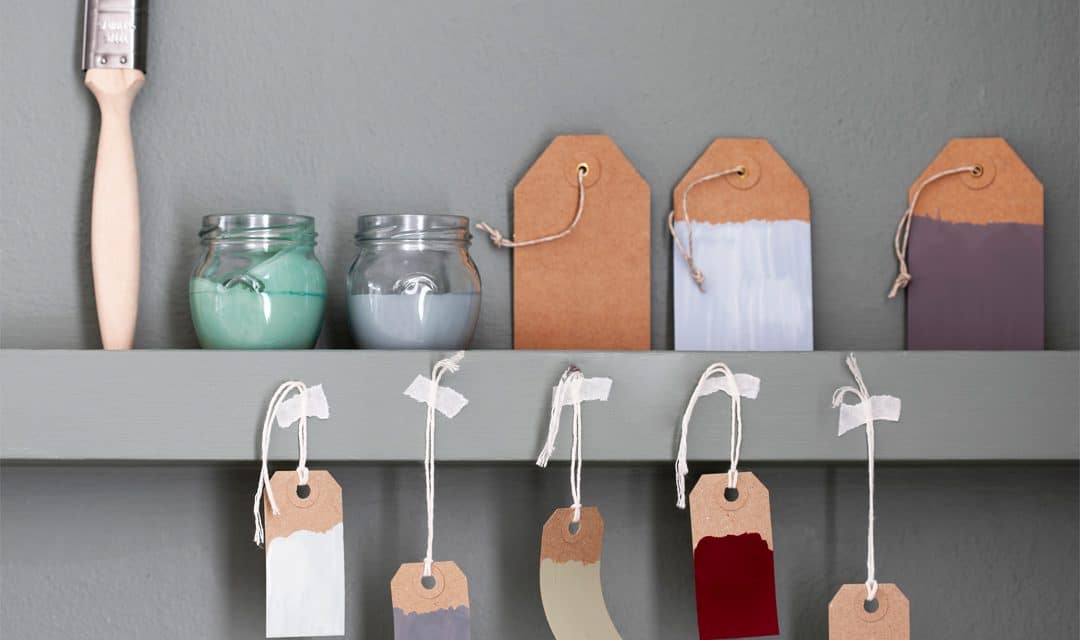
Efficiency-Geared Products
In the sustainable design industry, we’ve seen an increased use of energy-efficient and water-efficient design elements and products — like solar panels, water reclamation systems, and heat pump water heaters. The best part about efficiency-geared products: the two-part benefits. Not only do efficient products greatly reduce monthly bills, but the lower energy or water use translates into a lower negative impact on the environment – so homeowners can save money and feel great about doing it. If you’re ready to get extra efficient, look for the EPA’s EnergyStar and WaterWise logos.
featured: Goal zero portable solar energy
Goal Zero manufactures solar-powered products for any place, any space, and any occasion. Charge or power almost anything from sun, including phones, laptops, lights, and even refrigerators!
Goal Zero offers a variety of solar-powered products for every time and place. Whether you’re seeking a solar-powered generator or an on-the-go energy solution, Goal Zero has a wide range of products for you to choose from.

Reclaimed & Recycled
The most notable perk of using recycled building materials: Giving a second life to materials that would otherwise be sent to a landfill. But just because a product is being reused doesn’t necessarily mean the quality will suffer. For example, recycled composite decking uses recycled plastic to create a beautiful and durable deck that’s totally maintenance-free. Recycled tiling and mosaic, doors, insulation, roof and wall materials, and even recycled steel beams all go to show that nearly every conventional building material has a recycled alternative.
featured: ECO by Cosentino recycled countertops
ECO by Cosentino® — where eco-friendly meets absolutely stunning. ECO is an original product manufactured from 75% of recycled materials such as mirror, glass, porcelain, earthenware and vitrified ash. A huge variety of colors and styles means that any homeowner or designer will find the perfect recycled countertop for their home with ECO by Cosentino.
ECO recycled countertops are GREENGUARD certified and qualify for LEED credits.
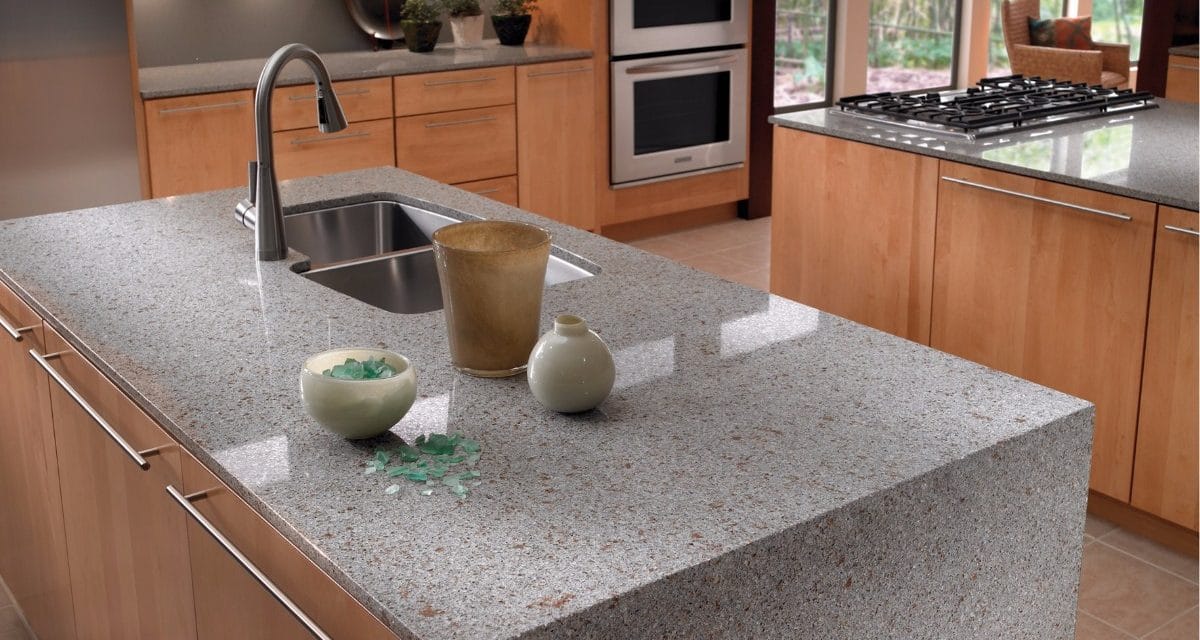
Statement Glass
No home decor statement can quite compare with architectural elements that allow your indoor and outdoor spaces to blend together. Large decorative windows, giant single-panes, sliding glass windows and doors — all of these glass elements help to almost entirely dissolve the separation between inside and outside. Benefits of large glass include increased natural lighting, a larger feel to the space and a more tangible connection to nature — even lounging in the dry, temperature-controlled indoors.
Particularly with large windows, it’s important to choose energy-efficiency so that the window isn’t a perfect place for warmth to escape. LEED-certified windows and Passive house windows are great options for statement glass doors and windows that won’t reduce your home’s energy efficiency.
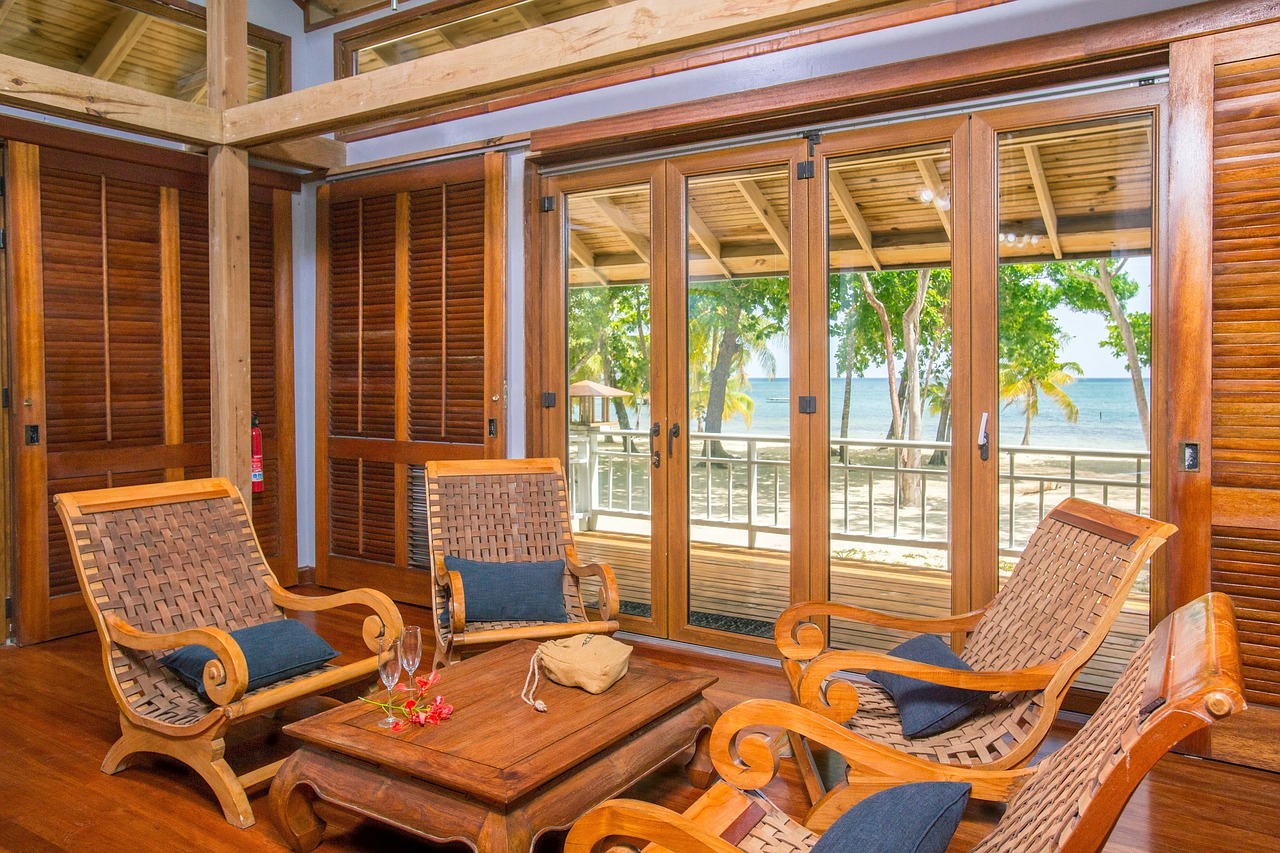
Living Walls and Roofs
Plants filter toxins out of the air and are shown to improve air quality. In fact, the U.S. National Library of Medicine estimates that new plants in the home can filter toxins and purify indoor air overnight. But it’s not just gardens and house plants anymore — Living greens are showing up in sustainable building design in some really fantastic and surprising ways:
Green roofs
One of the most notable trending uses of plants in green homes is a green living roof. This roof, made from a water-retaining layer and living vegetation including grasses, flowers, and shrubs, is highly energy-efficient, eco-friendly, and beautiful. Check out 7 of the most popular green roofs, or learn how to DIY a green roof yourself!
Living walls
A living wall, or green wall system, provides a healthy growing environment for plants on virtually any interior wall surface. More and more homeowners and builders are choosing living walls for houses because they purify the air, reduce volatile organic compounds (VOCs), humidify the air, and promote a healthier, happier family. People surrounded by green wall plants experience improved mental and physical health, feel more content and relaxed, and are more creative. Living wall manufacturers like LiveWall (pictured) make the installation process easy and provide a huge variety of options for every style and every space.

The growth of sustainable home design trends
These top 10 sustainable home design trends illuminate a sustainable building movement that’s growing and getting greater and greener every day. And it’s no surprise — the rewards for building green are plentiful and extend beyond the walls of your home to the planet’s environment, which is made better because of it.
Read more about sustainable home design:


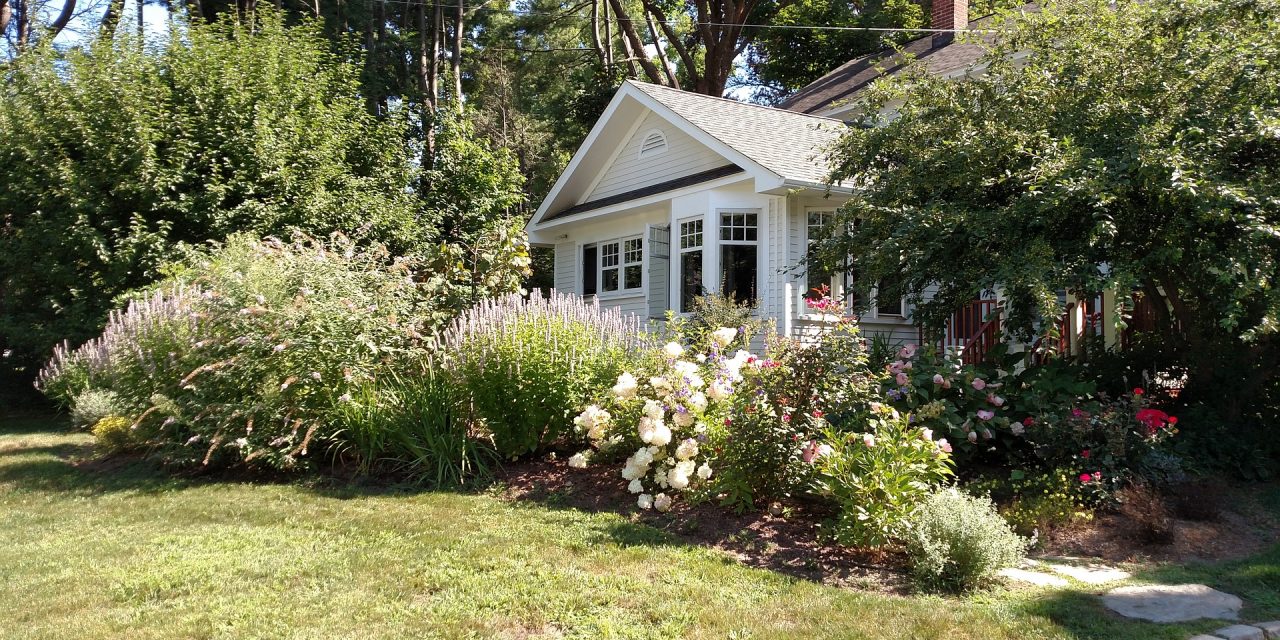



![10 Steps Toward a Zero Energy Home [Infographic]](https://elemental.green/wp-content/uploads/2016/04/cbfb-440x264.jpg)

